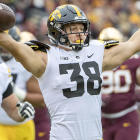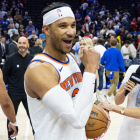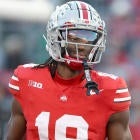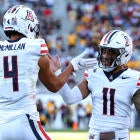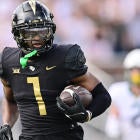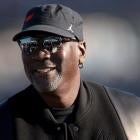At least two tight end prospects in the 2019 NFL Draft, which kicks off Thursday, are expected to be taken in the first round (and Jason La Canfora says there will be three). It's a good tight end class from top to bottom, with a good amount of depth likely to go between Rounds 3 and 5. I've pinpointed some comparisons for the tight ends at the top (both from Iowa, T.J. Hockenson and Noah Fant) as well as in the middle rounds.
NFL comparisons for draftees, it's important to remember, don't intend to guarantee a prospect will have the exact same career as his professional counterpart. In this series, I'll go through the top prospects at every position and give NFL comparisons -- some current players, some former. These comparisons are not based on size. They're almost solely stylistic.
As for the actual draft, you'll be able to stream our live coverage right here on CBS Sports HQ (or download the CBS Sports app for free on any mobile or connected TV device) breaking down all the picks and everything you need to know during draft weekend.
Previous installments: Quarterbacks, Running Backs, Wide Receivers, Offensive Linemen
(Prospects are listed in the order they appear in my draft rankings.)
T.J. Hockenson, Iowa
NFL comparison: George Kittle
Easy, same-school comparison here. Like Kittle, Hockenson is a serious seam-stretcher who plays faster than his 4.7 time in the 40. He has dynamic feet, springy leaping ability, and strong hands, so he's the consummate big target over the middle. He's probably a little ahead of where Kittle was as a blocker when he entered the league, but for as many highlight reel blocks as Hockenson put on film in 2018, he could add bulk which would give him more power against defensive ends when he's in-line.
Noah Fant, Iowa
NFL comparison: O.J. Howard
Fant is a relatively rare tight end prospect and that's mainly due to his athletic talent. He crushed his combine workout and doesn't play slower or any less explosive than some of times and measurements indicate. Like Howard, he's a big-play waiting to happen, and actually Fant is a bit more consistent in the open field after the catch than Howard was. Both have elite top end speed for the position that allows them to take a short route the distance if given space. Fant and Howard were both well-versed but not dominant as blockers in college.
Jace Sternberger, Texas A&M
NFL comparison: Vance McDonald
McDonald was used often as a slot receiver at Rice, so his blocking in space was more advanced than his in-line blocking. Sternberger played in a traditional offense under Jimbo Fisher in 2018 and needs to get nastier when blocking. Despite coming from different collegiate schemes, from a receiving standpoint, these two are very similar. Like McDonald, Sternberger is super-fluid before and after the catch, which allows him to create separation and routinely pick up extra yardage. There's a decent amount of wiggle to his game. While he's a good route runner, simply getting Sternberger the ball in space is certainly not a bad idea.
Foster Moreau, LSU
NFL comparison: Jack Doyle
Moreau doesn't wow in any way. He gets the job done as a blocker in most scenarios without totally dominating and has plus athleticism to win down the field and after the catch as a reliable receiver. Sound like anyone? Doyle is one of the most inconspicuous tight ends in the game, yet when healthy, he's been an awesome security blanket underneath for Andrew Luck. Moreau provides a bit more juice as an athlete. Doyle's a little bigger.
Kahale Warring, San Diego State
NFL comparison: Kyle Rudolph
Warring is the sleeper tight end in this class. Rudolph was well-known coming out of Notre Dame. So based on their notoriety as prospects, there are no similarities between these two. Warring is slightly above average in terms of build, is surprisingly spry breaking off his route stem, and uses his large frame to wall off defenders down the field with the ball in the air. A lot of those elements are Rudolph-like. Warring too has loads of experience in-line as a blocker and holds in own in that area. While not a true road-grader on the outside, he'll win some battles in the trenches early in his pro career. That's an element of his game more impressive than Rudolph's when he entered the NFL.
Dax Raymond, Utah State
NFL comparison: Charles Clay
Raymond is a fun space player, both as a blocker and receiver. He was predominantly used split out in the slot but didn't shy away from the difficult task of locating smaller linebackers and cornerbacks on outside runs and screens and latching on. He's a quality pass-catching target too thanks to above-average burst off the ball and an extra gear once he gets the ball in his hands. Much of those qualities are reminiscent of Clay before a nagging knee injury sapped some of his twitchiness.
Irv Smith Jr., Alabama
NFL comparison: Trey Burton
Burton went undrafted out of Florida as an H-back type who specialized after the catch. Smith is likely to be the third tight end off the board but is another very small tight end prospect who you want to get the football underneath to let him create after the catch. They tested similarly at the combine. And, like Burton, in the correct scheme with that niche role, Smith Jr. can be a quality pass-catching option in the NFL.












